07 Nov Case Study: Re-imagining a Wildlife Pond
Many of our clients ask for a whole new garden. This case study is slightly different in that the client only wanted one area refurbished. A wildlife pond which is overlooked by a large picture window.
There’s something really special about being asked to redesign just one part of a garden. All of the usual design challenges apply only now, the new piece needs to match the style of the areas that are to remain untouched.
In this case study we’re looking at a garden where the homeowners wanted to improve the view from their window. They wanted a focal point fairly close to the building that blends into and enhances the view of the whole garden.
A bit like a painting where the subject wouldn’t look right without the subject but neither would the subject look good without a background.
There was an existing water feature – but it was underused by the homeowners and the wildlife so, just like an interior designer would transform a kitchen, we set about transforming the pond.
The challenge for our garden designer
This beautiful property near Frinton on Sea has a large, easily managed garden which offers stunning views from the picture window. There’s plenty of recreation space, a productive orchard and well-chosen shrubs to offer all year round interest. However, the owners wanted a little more value from the small, tired looking pond.
Before we started: The pond was relatively small, raised above the ground (difficult for wildlife to access) and only supported one or two plant species, thus limiting biodiversity. On the plus side, the setting was amazing!
The homeowners who, although they enjoy everything their garden has to offer, don’t have a lot of time for gardening per se. So their new pond needed to be low maintenance. That means having the right balance of plants, sunshine, water volume and wildlife to create a self-sustaining eco-system. Soothing watery sounds and exotic koi carp were not a priority for this project. The clients wanted a wildlife pond that would attract insects, birds, frogs, toads and perhaps the occasional thirsty fox or deer. They wanted to be able to watch the wildlife from the comfort of their own home.
The design process
Unlike a whole garden makeover, we knew from the start exactly where the pond would be sitting. What was surrounding it in terms of trees and other plants, how the sunlight meets and travels around the site. The clients were happy for us to remove most of the existing shrubs, however, the hedge and the mature trees were to stay. That meant we needed to consider where the roots of those trees would be – and also where all the leaves would fall in winter time. Having too many autumn leaves fall into a pond not only makes a lot of work, it also upsets the ecobalance.
We all agreed that the pond should look as though it had always been a part of the landscape. That meant soft curves with planted margins and wonderful views to the orchard beyond.
Shapes and plants are all very well, but in this instance, garden design needed to merge with an engineering challenge. Essex clay soils are wonderful, but they do present challenges when pond building. If we were to dig a hole and put a pond liner in it – Monty Don style we would have risked the pond being ruined by a phenomenon called hippoing.
Installing anti-hippoing system beneath the pond
Hippoing is not unusual on this soil type. Water comes up from the water table beneath the pond liner and pushes it upwards. Even with the weight of the pond liner and plants pushing down on it, the liner will rise up and it will look as though there is a hippo swimming about in the pond with just it’s back exposed. It’s ugly and it’s hard to rectify. We specified a drainage system with a pump which takes excess water away from the underside of the pond.
Construction
Construction was carried out by Holland Landscapes. A Company that the clients agreed had the expertise and the equipment to do the job properly.
Planting up a wildlife pond
The only consideration for planting up an ornamental water feature is aesthetics. It’s great to have a variety of plants but it won’t matter whether or not they attract the insects that will in turn attract birds and amphibians.
A wildlife pond needs a careful balance of oxygenating plants to keep the water healthy, marginal plants for creatures to hide in and flowering plants to support pollinators. It needs perches, slopes for animals to access the water. Sunbathing spots for amphibians to sun themselves and in this case, it needed to look amazing all year round. It must be deep enough so that it doesn’t freeze completely in winter time (a layer of ice is good, solid ice, not so great). It also needs places for frogs and toads to lay their eggs in spring and hibernate in winter.
The pond was designed so that it has three different depths of water. Replicating most wetland areas and natural ponds. It’s a bit like a very wet upside down wood. With a high canopy in the middle, which turns into shrubs and then wildflower areas around the edge.
In this pond the levels are:
- Very deep in the centre – water lilies love deep water plus the deeper it is, the less likely it will freeze so it’s good place for frogs and newts to hibernate.
- Moderately deep – this water will warm up quicker in spring so that insects and amphibians can get active.
- Shallow around the edges a boggy area where insects can perch to drink and any overflow from the pond can be contained.
This picture shows how the various pond depths work together. Sand protects the liner against damage from stones and to create gentle slopes between terraces. Notice how the “entrance” to the pond which will become a pebble beach is has a gentle gradient from top to bottom. The gentleman in the picture gives you an idea of scale. He’s just under 6ft tall when standing up straight.
For each area we have selected plants that will thrive without becoming invasive, look good and support wildlife.
Blending the new pond with the surrounding landscape
To blend the wildlife pond in with its surroundings we have created a pebble beach between the driveway and the water. This has a twofold effect. First it offers easy access for the homeowners and any little visitors who fancy a bit of pond dipping. Secondly, it’s a nice easy way for creatures to climb in and out of the pond and it’s somewhere for flying insects to drink without drowning.
The pebble beach uses variable sized stones – not just for visual interest. These are sunbathing spots for amphibians as well as perches for thirsty insects and birds.
You know when you’ve used the right pond building contractor – there’s no liner on show and the water looks level.
We’ve used grasses between the pond and the orchard beyond. These are a nice transition between the wild area and the lawns. They blend easily with the reeds and iris growing in the margins of the pond. Grasses offer movement on windy days as well as seasonal colour changes. The grasses will help create a microclimate around the pond too. For tiny creatures at ground level, it will feel much less exposed.
Bergenias aka elehants ears have great big leathery leaves that cast shade upon the soil and are super places to hide – if you’re a slug or a toad who eats slugs. They are evergreen so do their job all year round. And as a bonus, they are everso easy to look after. Early summer flowers provide a pop of colour and lots of pollen and nectar for insects.
Bergenia in springtime have a profusion of pink flowers with a wonderful open shape so that pollen and nectar are easy for bumble bees to reach.
The finished wildlife pond.
This was taken a couple of weeks after planting. The green bloom on the pond is part of the settling process. Once the pond ecosystem has matured, algae shouldn’t be a problem. I love the way the existing trees seem to hug the pond – as though it has always been there.
Would you like to update part of your own garden?
If you would like help to redesign part of your garden, why not give us a call. Perhaps you want a new seating area, a vegetable garden or a safe play space for the children. We can come to your garden for a brainstorming session and leave you with ideas for your own project.
Read more about our garden design packages here
Check out our portfolio for before and after pics of other recent projects





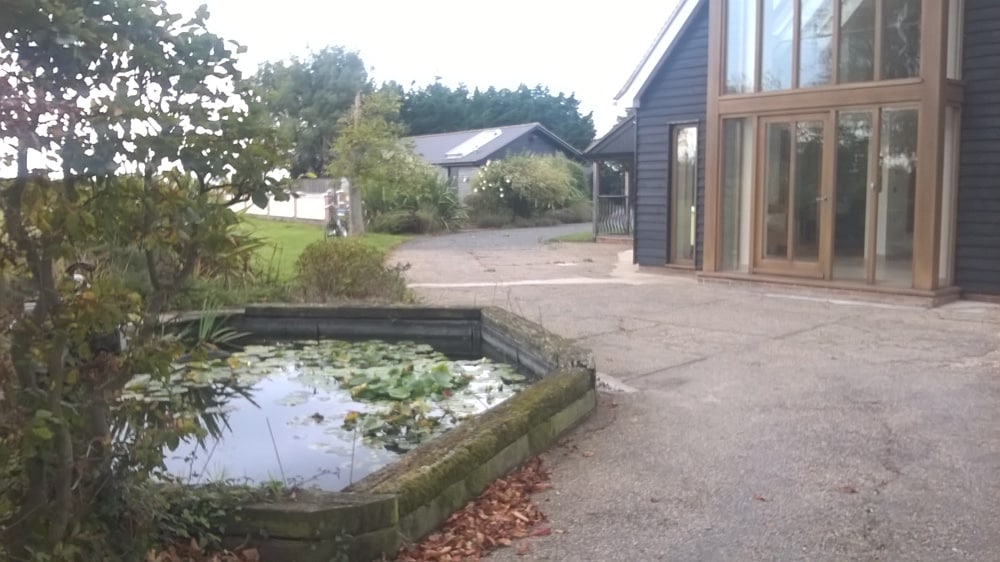
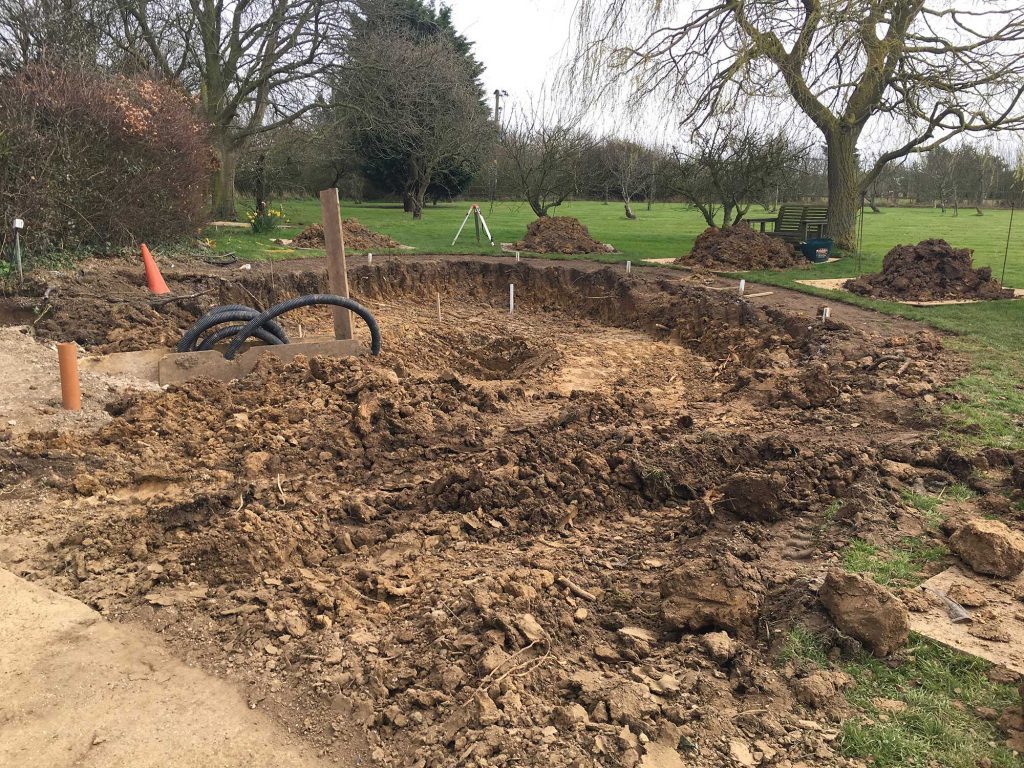
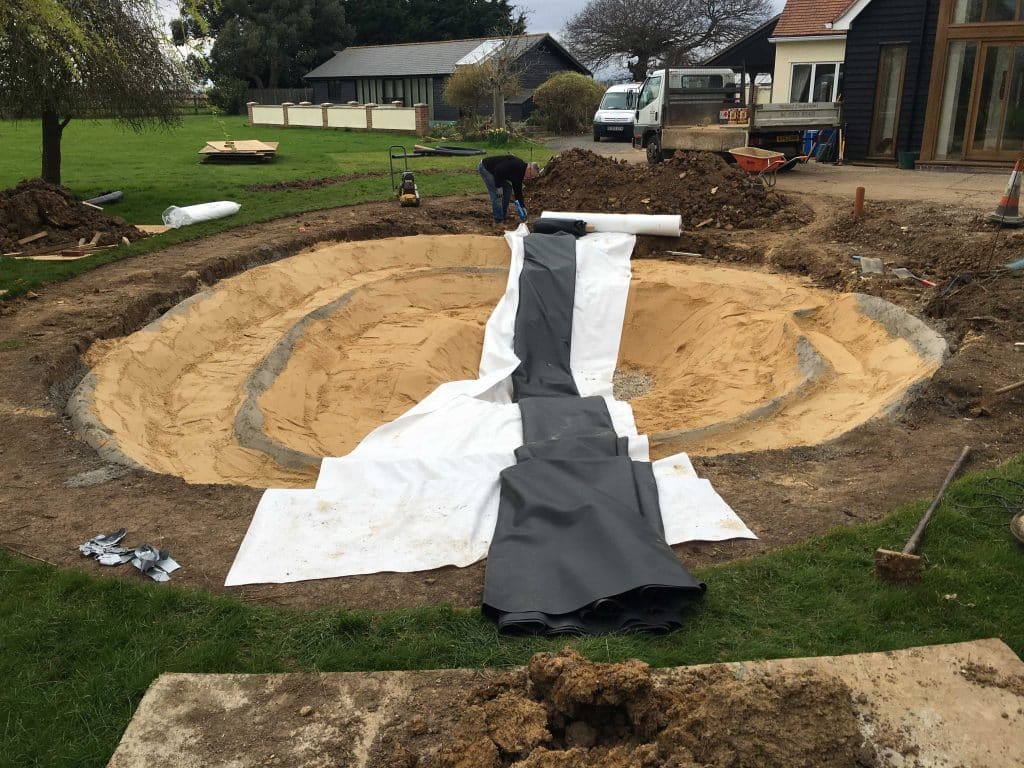
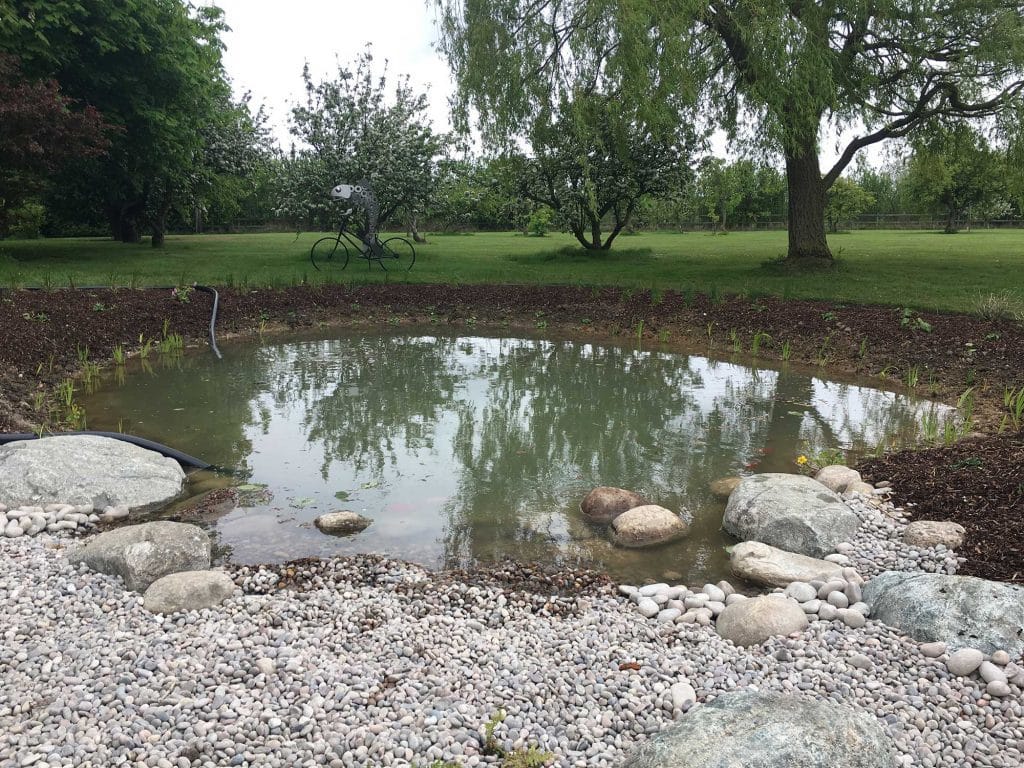
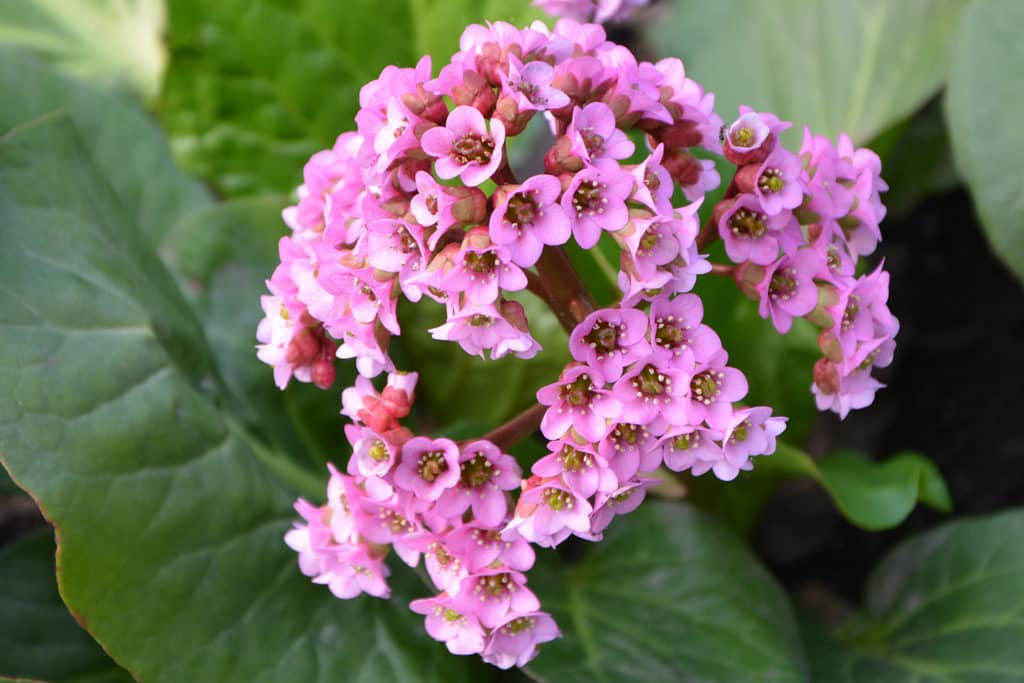
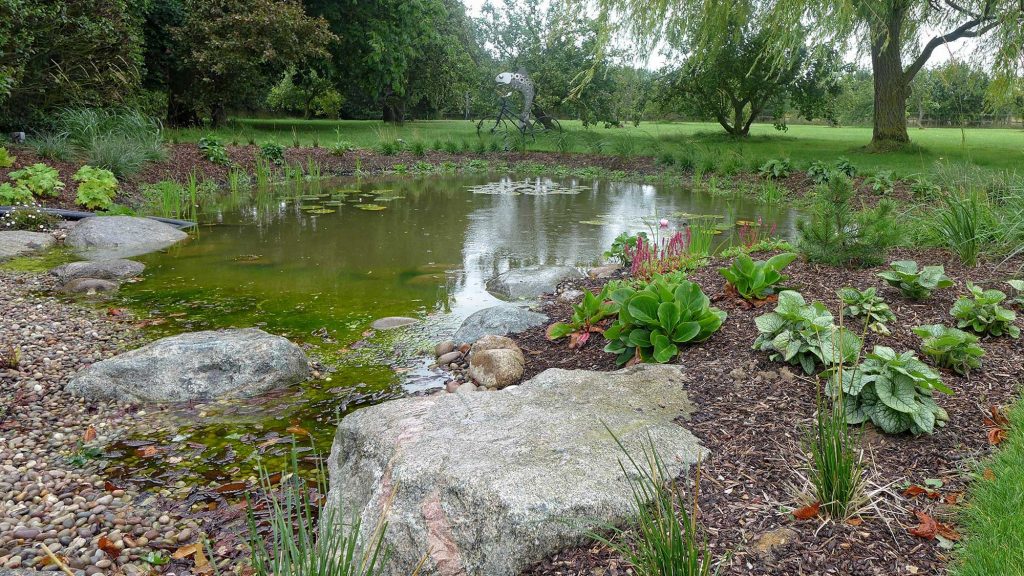
Sorry, the comment form is closed at this time.